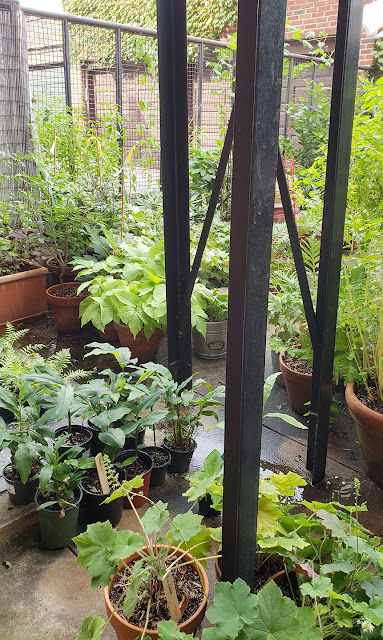I uploaded these pictures weeks ago and never hit Publish. Family events have swamped other impulses. But this was a lovely walk, and allowed me to reconnect with my niece, whom I have not spent time with for a very long...time. It also gave us both a really good workout. The first hour-and-a half is steadily, steeply, strenuously uphill (upmountain - why is that not a word?).
If you know what that moth is, please say. My South African insect book is sitting uselessly in Brooklyn. The moth is on scabiosa, a South African native that is now common in the international nursery trade.
Remarkably few Capetonians (certain biologist-friends excepted!) seem enthused about walking on the beautiful mountain smack in the middle of the city. It still surprises me. It is famously/notoriously accessible and reveals a world of botanical integrity that is kind of mind blowing. Luckily The Niece is intrepid, and she and I slogged our way up Skeleton Gorge, stopping often to pant, before reaching the top. Approached from this angle it is not, as many visitors think, flat.
Ella is not an ugly girl. Here with Watsonia tabularis.
Real plant ladies. These are the kind of people who first introduced me to the plants on the mountain. Long pants, hats, backpacks, walking sticks, sandwiches and flasks of tea. The eldest in their party must have been in his early 80's. They were walking with a young guide, possibly to act as muscle in case they needed it. Like us, they were in search of an ethereally beautiful local orchid, the drip disa, Disa longicornu. It flowers in December only in the cleanest of seeping or dripping water.
We found the disas in their usual spot. They are enchanting.
The botanical ladies also showed me this tiny orchid, about four inches high, growing from the same rock face. Holothrix. I think the species is villosa.
Fifteen minutes later I returned the favour and showed them this exquisite little disa, hidden in a mossy wall. They told me it was Disa vaginata (what if women had described and named more plants?). The flowers less than half an inch across.
The Frenchman and I always make a ritual stop as this little waterfall. I filled my water bottle, and The Niece splashed.
Fast forward past a breakfast break, a long hike down deep gorges past pools flowing with fynbos water the colour of Coca Cola, two reservoirs, and a landscape of twittering orange-breasted sunbirds (if only I had my telephoto with me), and we had come full circle, arriving at the top of our route down: Nursery Ravine. Recent fire had provoked this flowering of Bobartia indica.
It is a relentless series of steps and if you have sore knees, forget about it. I'm not sure Ella has forgiven me. But there is always the gentle jeep track if you need a slower descent.
You can't repress the inner forager. Bracken fiddleheads in abundance invited harvesting. Blanch them in boiling water before eating, and they are delicious (in Forage Harvest Feast they are one of the two fiddleheads I recommend eating).
Long hike, and two days later I was really stiff, but it was wonderful to reconnect with what matters; in most ways (with exceptions, of course) 2018 has been a year to forget rather than remember. I have lost parts of myself along the way, and I have changed. I don't like the change, and I will be working to find the lost bits and perhaps some new ones, too. The only truism I know remains intact: life may be unfair, people do not have to be. We can all choose to act with integrity. I am beyond lucky to be married to a person who has had as tough a year, more so, in some ways, but who has managed to be a solid support - and lifebuoy - throughout. Time for me to return the favour.
In other news, if you usually find me via Facebook, I will be deleting my Facebook accounts at the end of the year, but will still be on Instagram. The latter may be owned by the former but - for now, at least - the privacy and data concerns are far more controllable on Instagram, and I just prefer it as a way to communicate. I will keep posting here too, but as time allows.
And I will be posting a new, late winter walk schedule, soon. On February 28th there is also a wild-inspired cooking class and cocktail-supper lined up for Brooklyn's beautiful Cook Space. I will add these links as soon as they are live.
...
Dear 2019: Be nice.



















































